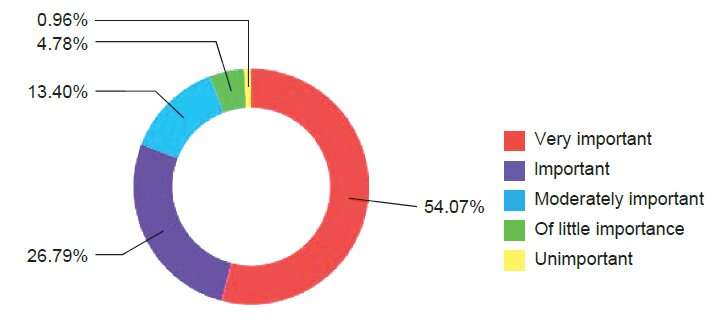Researchers survey rural residents' Internet usage in Aotearoa, New Zealand's northern island

Several years ago, the government of Aotearoa New Zealand undertook an initiative to provide Internet access throughout the country. To observe the status of broadband adoption and usage in the rural areas, a group of final year research and development (R&D) undergraduate students with their supervisors conducted a statistical survey of broadband availability, quality and adoption.
The study first appeared online in September 2022 in Intelligent and Converged Network, and then published in the journal's print version on December 22, 2022.
The Aotearoa New Zealand government's Rural Broadband Initiative was investing 400 million New Zealand dollars to provide 99 percent of the country with access to 50 Mbps peak broadband speed, with the remaining 1 percent of the country at 10 Mbps, by the year 2025. By 2017, the stage 1 of the initiative was completed. The research team set out to study and observe the level of usage, proficiency, and productivity achieved with the broadband installation the initiative had completed.
The research team conducted a survey to learn whether the rural residents and their communities are making good use of the new fast broadband connections. The survey was conducted between February and July 2018, with the data collected from 217 rural residents from New Zealand's North Island. The team conducted the hybrid face-to-face and online questionnaires with rural Internet users to gather the survey information.
Their survey results showed that while providing the technology infrastructure is the first step, the technology alone is not enough.
"Internet skills in-depth training and education need to catch up with the infrastructure deployment, which is useful to fuel the digital productivity and inclusion for booming rural economies," said Dr. Ming (Simon) Xiang, who is the graduate of Auckland University of Technology, New Zealand and had mainly finalized the survey technical report. He is now with the South China University of Technology, and also with the Ministry of Natural Resources, People's Republic of China.
The rural Internet users surveyed is age ranged from 16 to over 70 years old. The majority of the people surveyed (70.83 percent) had never received any form of lessons or training on Internet skills. When the people were asked if they were interested in learning more ways to make better use of the Internet, the majority of answers were neutral (40.63 percent), suggesting that these users are not sure what additional benefits they can get from receiving instruction on Internet skills.
The results shows that about half the people surveyed are satisfied with the speed and reliability of their Internet connections provided by the government initiative. However, the remaining half of the people surveyed are unsatisfied. The people surveyed use the Internet mainly for information and news, online entertainment, and banking. A large proportion of the people are unsure how else the Internet can help them in their day-to-day activities.
In order for people living in rural areas to take full advantage of the Internet being installed, they need to learn how to use the technology effectively. For example, the majority of school teachers say they are not equipped to maximize the educational opportunities provided through fast broadband.
Among farmers, only a minority are willing to change practices they have been using for decades, even though the Internet could help them in a variety of ways from managing their accounts and budgets to measuring the yields of their herds. To make broadband Internet beneficial, people must use the connection effectively. If rural residents do not know how to use the technologies, they cannot see the opportunities and potential benefits that may come from their use.
The survey findings suggest that if these users were provided with training to help them catch up with the faster internet being installed, it could result in enhanced digital productivity and inclusion for rural businesses and the residents' well-being.
Looking ahead, the team hopes to effectively communicate their findings to the government and related agencies to steer the actions and activities in order to address the problems that have been identified. "The survey data-driven findings presented in this paper could serve as a reference to inform government policymakers and those who wish to create, invest, and take actions to speed up the economic and social growth of rural communities in Aotearoa New Zealand through the Internet," said Dr. Xiang.
More information: Ming Xiang et al, Broadband usage for rural communities in the North Island of Aotearoa New Zealand, Intelligent and Converged Networks (2022). DOI: 10.23919/ICN.2022.0021




















